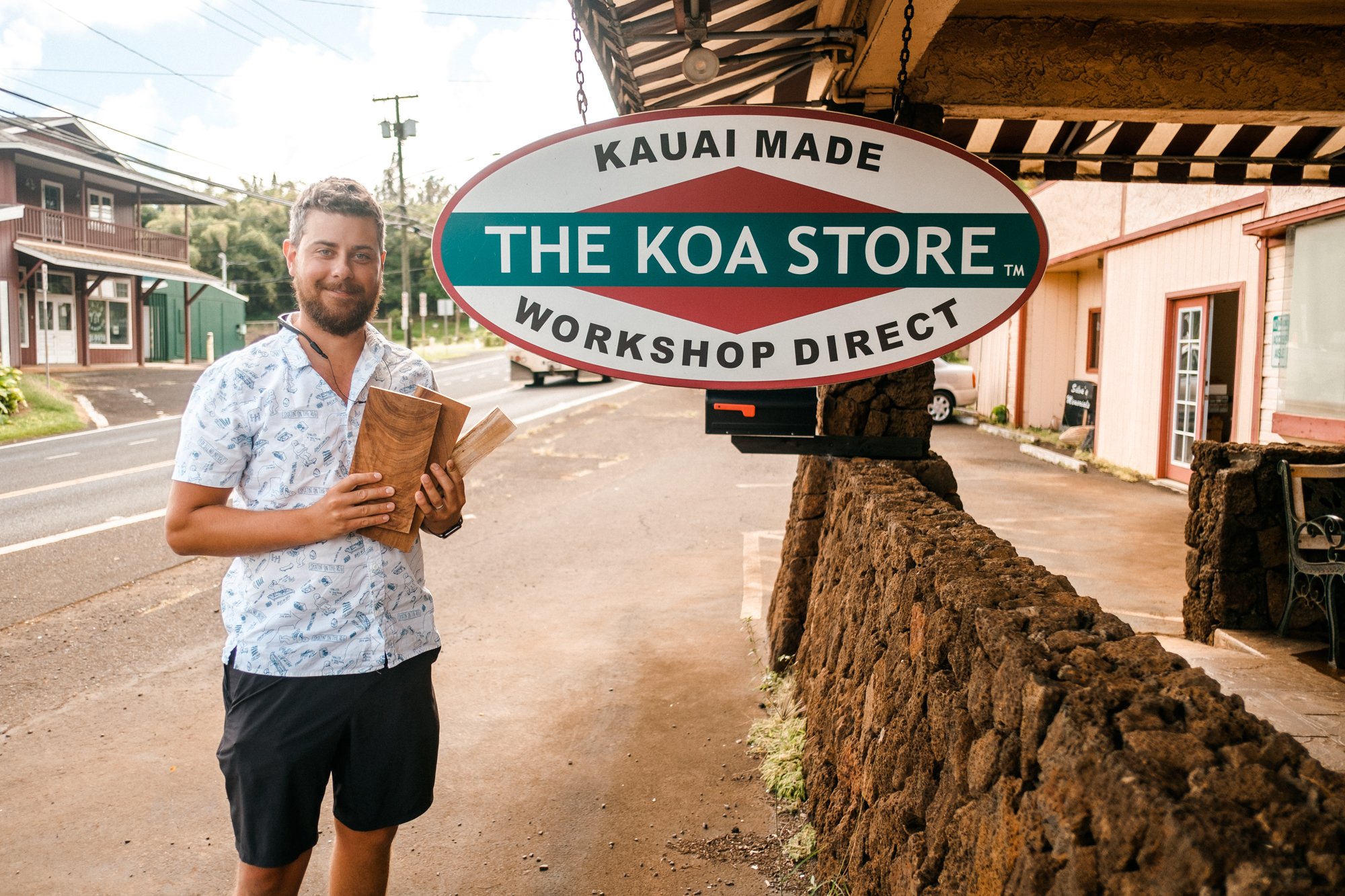Koa Wood: Its Color, Meaning, and Uses
Koa wood, also known as Acacia Koa, is a hardwood native to Hawaii. Artisan Obscura believes that craftsmanship can bring us closer to the things and people we interact with every day. Each piece of art has a story. As an artist, I want to interact with things that come from a specific place and are made by individuals with unique talents and visions. Stories are what make life beautiful. This blog post is meant to inspire respect and understanding for Koa wood and its culture of origin.
In late 2021, my wife and I traveled to Hawaii to celebrate our wedding anniversary. Hawaii’s natural beauty inspired us and refreshed us. The trees reminded me that the earth is constantly renewing itself, and the constant waves instilled a sense of rhythm and regularity I desperately needed. My experience was centering, and when I came across the opportunity to bring home a few pieces of Koa, I knew I wanted to add this beautiful wood to my offerings and share them with the Artisan Obscura tribe.
The Color of Koa Wood
The color of Koa wood lies on a spectrum between medium gold and reddish-brown. Some compare the color palette to that of mahogany. What makes Koa unique is that the color is rarely consistent throughout the tree. The hue will shift across the growth rings, and it is not uncommon to see boards with ribbon-like streaks of color. Likewise, Koa is sought for its “curly” appearance. Only 10% of all Koa wood exhibit the curly feature – a wavy, fluttering cross-grain pattern that adds a unique flair to the look.
Woodworkers will also notice that Koa is very similar in strength and weight to that of Black Walnut. Koa has open grain, sands and finishes well, and turns nicely.
Finally, it’s interesting to note that Koa wood changes color depending on its island of origin. For example, wood from Honokaa has a dark red look while wood from Hoonaunau in Kona has an orange-brown color. The wood used at Artisan Obscura is from the island of Kauai. If you’re looking for high-quality Koa wood, you should expect to pay over $150 per board foot due to its rarity and sturdiness.
Biology and Location
Koa wood is endemic to the islands of Hawaii, making them the only place on earth where these trees grow. For the most part, Koa grows through the island chain, especially the Big Island. Why Hawaii? Koa trees thrive in volcanic soil, and few places in the world have as many volcanoes than Hawaii. The rich soil also means Koa trees can grow more than 100 feet high. The best Koa trees can be found specifically on higher elevations of the Big Island and take 50 to 70 years to mature.
Although Koa wood is extremely rare, it’s not endangered. After a period of deforestation due to livestock and the lumber industry, Hawaiians decided to abide by strict preservation laws. For example, the Kona Hema Preserve is managed by The Nature Conservancy and is not open to the public. The Conservancy’s Kona Hema Preserve (8,089 acres) protects part of an ancient koa-‘ōhi‘a forest that spans more than 100,000 acres along the coast of the Island of Hawai‘i.
If you’re a woodworker looking to craft a piece from Koa, it’s important to know that the only way to obtain Koa wood is by harvesting compromised, dead, or fallen trees. Harvesting healthy trees is prohibited.
The Meaning Behind the Word, “Koa”
The word “Koa” means warrior in Hawaiian and is often associated with strength and courage. In ancient times, warriors would make weapons out of Koa trees, and the association between the weapons and the wielders became so strong that the two words became one. These hand-to-hand weapons often combined shark teeth, marlin bills, and koa wood. The fish parts allowed for dangerous slashing abilities while the wood provided for blunt force attacks. Koa wood was also used in making canoes.
During one historical period, Koa wood was reserved for royalty. Any other use was prohibited. Monarchs would send gifts made of Koa to other rulers, and they also used the wood to adorn lavish palaces.
However, this rule was eventually abandoned, and Koa became a popular material for crafting everyday items for all people. Dishware, early cutlery, surfboards, and even ukuleles were made out of koa wood. Food was served in carved-out Koa bowls called “umeke.” Cutting and carving instruments for daily living called “niho ‘oki” were made from koa and shark’s teeth. These instruments were used in the same way as today’s x-acto knives.
Modern Uses for Koa Wood
Today, Koa is no longer used for crafting weapons. Instead, it’s highly valued for making furniture, fashion accessories, and instruments.
Due to its rarity, Koa wood is often reserved for high-quality items. If you want to buy a made-to-order dining set built from Koa wood, you should expect to pay around $16,000. However, you’ll be sure to come away with a unique piece that will last for decades. Did you know Taylor Swift owns a guitar made of Koa? In fact, Taylor Guitars (no relation to Swift) has created an entire line of Koa-made guitars.
Is Koa wood a good material for surfboards? The short answer is “no.” While ancient surfboards were made of Koa, the wood is much too heavy for modern surfing. To learn more, here’s a blog post all about Koa wood and surfboards.
If you’d like to experience Koa without breaking the bank, you can purchase a hot shoe cover or soft-release button from Artisan Obscura. We’ve created a limited run of pieces from authentic, Hawaiian Koa. Once these pieces are gone, they’re gone, and I can’t make any assurances we will get more Koa for a second run.





